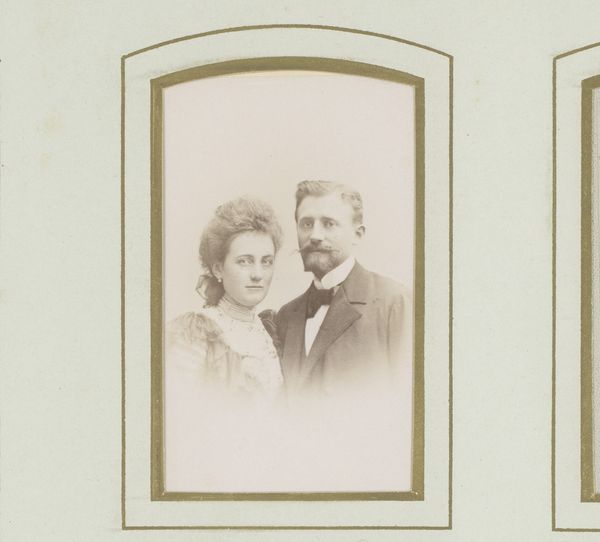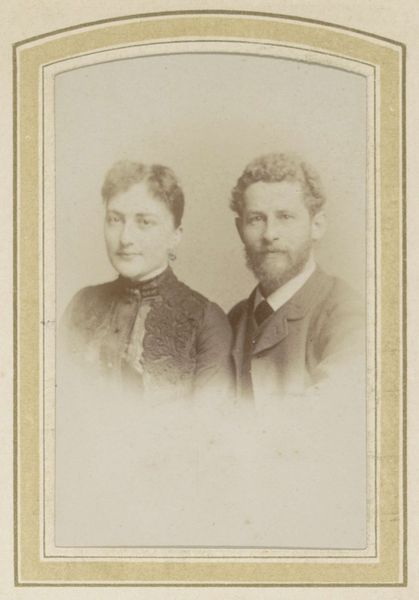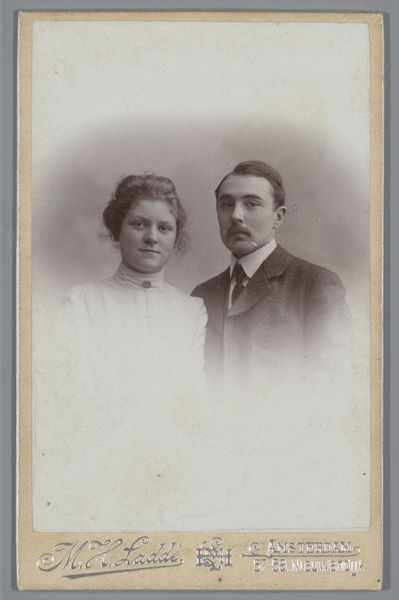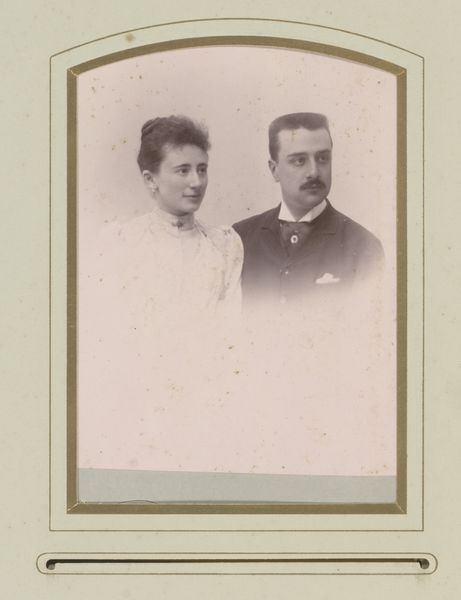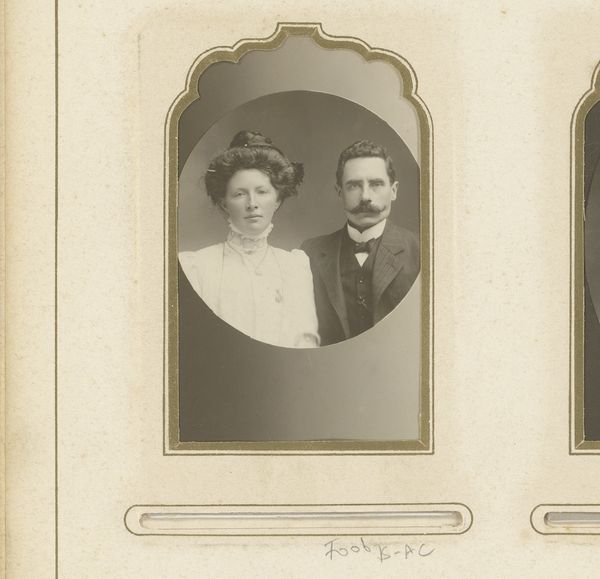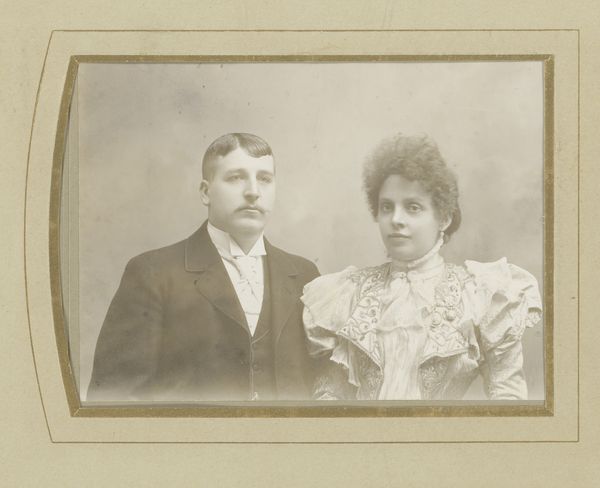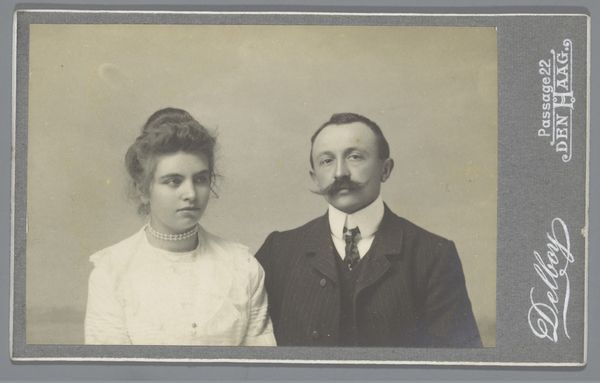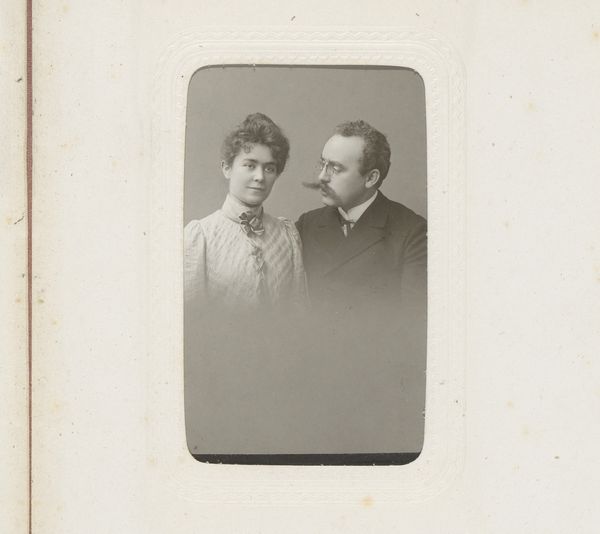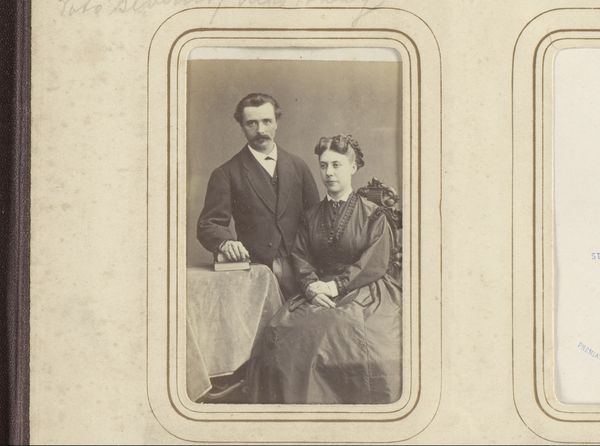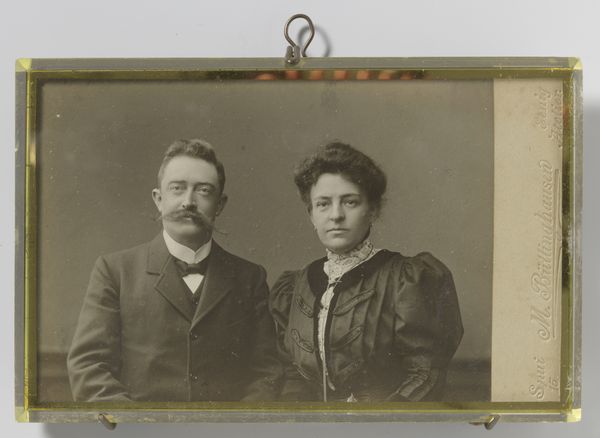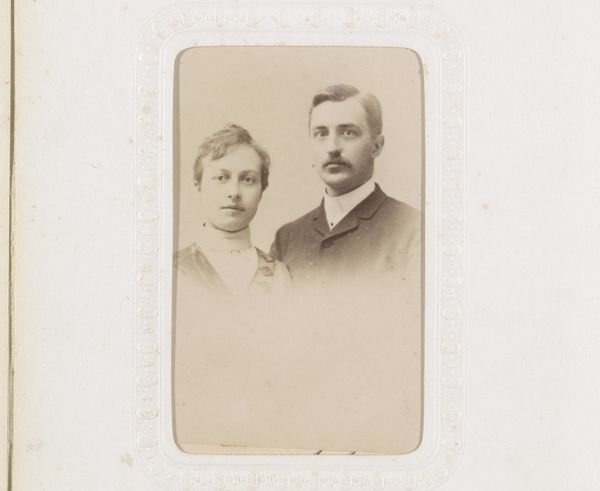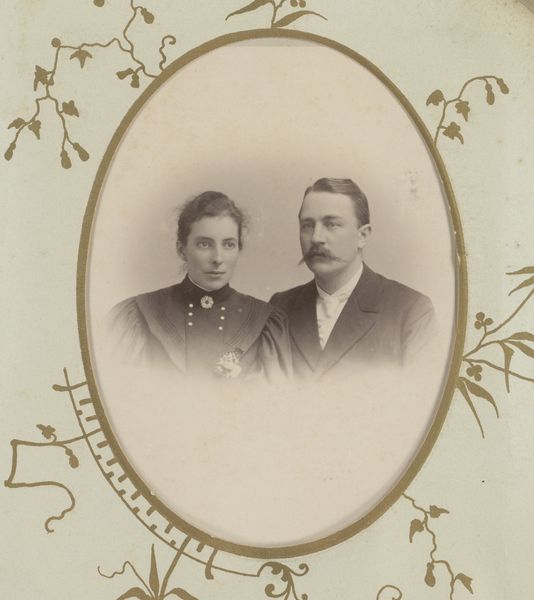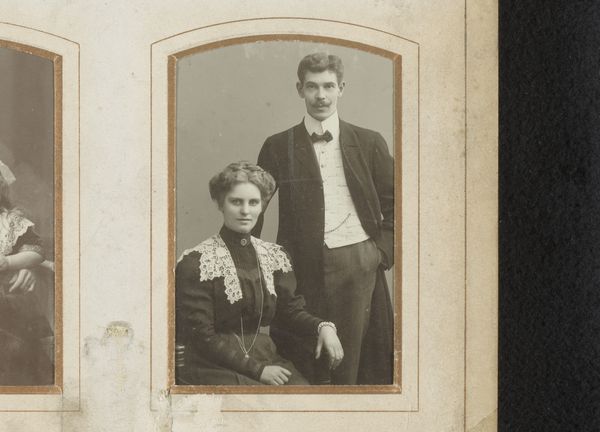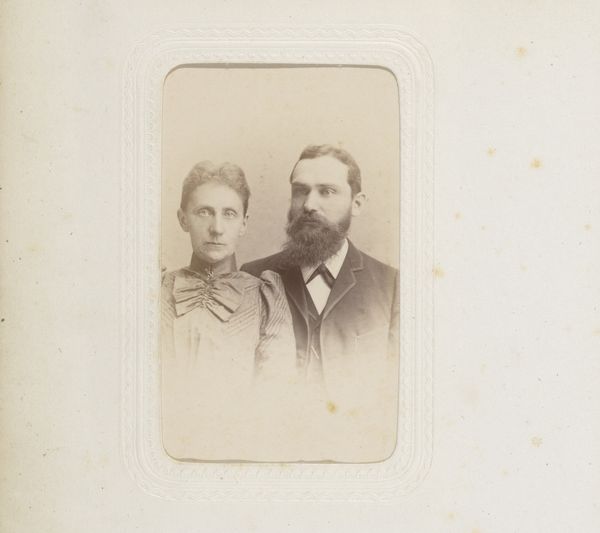
Dimensions: height 84 mm, width 53 mm
Copyright: Rijks Museum: Open Domain
Editor: Here we have a portrait from around 1899, called "Portret van een man en een vrouw", attributed to Erich Sellin. It’s a photographic print, and what strikes me is the very formal composition. The couple seem posed, stiff almost. What do you make of this, looking at it formally? Curator: The composition is, as you observe, meticulously constructed. Note how the frame within a frame isolates and elevates the subjects, drawing our focus to their symmetry and almost sculptural presence. Consider the tonal range; the restricted palette enhances the sense of timelessness. How do you see the relationship between the sitters expressed through their arrangement within the picture plane? Editor: I guess the symmetry makes them seem equal, like a partnership? Their heads are level and their bodies take up about the same amount of space. It’s not very dynamic, though. Curator: Precisely. This lack of dynamism underscores a specific kind of representation – one intended to convey stability, perhaps permanence. But look closer at the surface quality of the photograph itself. Does the slight blurring around the edges and subtle imperfections detract from or add to the overall composition? Editor: I hadn't thought about it that way, but I see what you mean. The slight blur and imperfections gives a sense of a lived reality, making the static image somehow more real. Curator: Exactly. And this interplay of intention and imperfection complicates our reading, doesn't it? By analysing the formal elements of this image, we are better able to understand its purpose and meaning. Editor: Thanks, that helps put this piece into perspective. Thinking about the composition really unlocks its significance, even with its slightly detached feel.
Comments
No comments
Be the first to comment and join the conversation on the ultimate creative platform.
